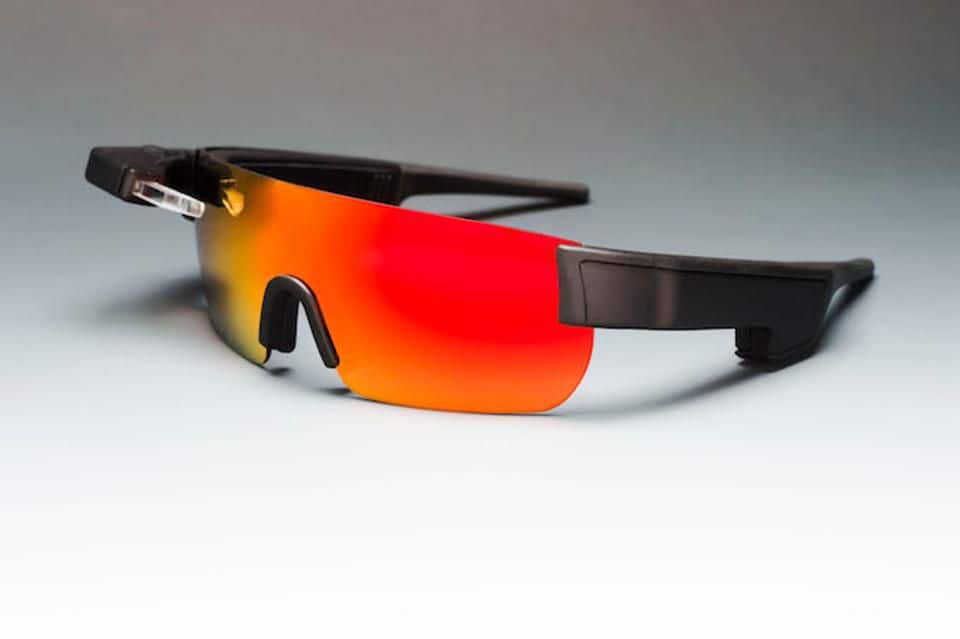When you focus on wearable AR Glasses, Kopin is probably not the company that first comes to mind. But they’ve got a long track record developing Augmented Reality devices for demanding environments. Charlie Fink sums up their history in Forbes.
Founded by materials scientist John Fan in 1985, Kopin spun off from the MIT Lincoln Lab, where Fan had been working on nanotechnologies. Kopin went on to make nano-transistors used by half the smartphones in the world. The company sold the transistor business in 2009 and today focuses exclusively on wearables. . . .Their journey has been an interesting one.Fan worked on solar cells and nano-engineered materials for the military at MIT in the 70s and 80s. In the 90s, Kopin received $50M from DARPA to develop micro LCDs with very high pixel density to enable wearable computers for soldiers. Since then, Kopin has become the leading supplier for AR HMDs for military applications, including those used in the F35 Joint Strike Fighter, for which Kopin provides microdisplays. Their clients include not only defense contractors like Rockwell Collins, Elbit, Thales and DRS, but also enterprise partners (Vuzix, Google, Fujitsu, Lenovo New Vision, and RealWear) and consumer (Intel/Recon, Garmin, and more).
But if the technology was state-of-the-art, these weren’t kind of devices that would impact the consumer market. F-35 fighter pilots use AR helmets because it keeps them from crashing, not because they’re comfortable.
Kopin’s wearable AR Glasses at CES 2018
The Consumer Electronics Show offered a lot this year and Kopin showed up with the SOLOS Smart Glasses. Like the military hardware, these aren’t meant to be a general-purpose wearable. But they are wearable AR Glasses for an important segment of the consumer market – runners and bikers.

The SOLOS Smart Glasses feature a heads-up see-through display with voice-control. And it lets you do many of things you currently do on your phone, including chat, calls, and music. The audible coaching prompts will be a feature that this market segment loves. Even more so once artificial intelligence takes off.
Most important, they’re actually wearable and relatively affordable at $499. It helps that they were designed with feedback from Team USA Cycling members. And they’re almost ready to go. Kopin posted an online reservation form with a Q2 delivery date.
John Fan’s Five Rules for doing AR Right
The SOLOS Smart Glasses follow John Fan’s five rules for doing AR right. These are points we’ll come back to as they’re essential in designing Augmented Reality wearables. And in a parallel way, the rules also apply to Virtual Reality experiences.
1) HUMANS FIRST. Humans do not generally want to wear devices on their heads. If users are uncomfortable, they will reject innovation. Prioritize human ergonomics first, technology second.
2) PHYSICAL WORLD FIRST. Too much virtual content can easily overwhelm the brain. Deliver AR overlays in small, controlled bursts.
3) MAINTAIN SITUATIONAL AWARENESS. When people become claustrophobic they react predictably. The AR experience must preserve contact to the real world by not obstructing five senses.
4) VOICE IS THE NEW TOUCH. Keyboards and touch screens require compromise. In AR, as in the real world, audio is the most effective and proven channel for command/control as well as transmitting and receiving information.
5) BALANCE DESIGN WITH BENEFITS. Do not overdesign by adding unnecessary features but design for clear, specific benefits to motivate adoption of AR. (Kopin Corporation)
Clear, simple, stripped down to the type of glasses you already wear. And added on is the augmented reality you need. It’s a different approach than Magic Leap which is gambling on a much more immersive experience – at a significantly higher price. It will be interesting watching how the market reacts to these near polar-opposite options.
As John Fan notes,
We started with the sunglasses that people are already using for cycling or running. We then added our technology to it. We wanted to ensure it looks good, and is light, very light, so you don’t think about having them on. At $499, the price is right, so people are willing to pay for it. And there’s a clear use case that makes something they are already doing better, augmented.
It’s a winning philosophy for wearables from a company with a proven track record. The SOLOS Smart Glasses aren’t wearable AR Glasses for the broader consumer market, but they’ll be a huge step in bringing augmented reality into our everyday lives.
Emory Craig is a writer, speaker, and consultant specializing in virtual reality (VR) and generative AI. With a rich background in art, new media, and higher education, he is a sought-after speaker at international conferences. Emory shares unique insights on innovation and collaborates with universities, nonprofits, businesses, and international organizations to develop transformative initiatives in XR, GenAI, and digital ethics. Passionate about harnessing the potential of cutting-edge technologies, he explores the ethical ramifications of blending the real with the virtual, sparking meaningful conversations about the future of human experience in an increasingly interconnected world.

